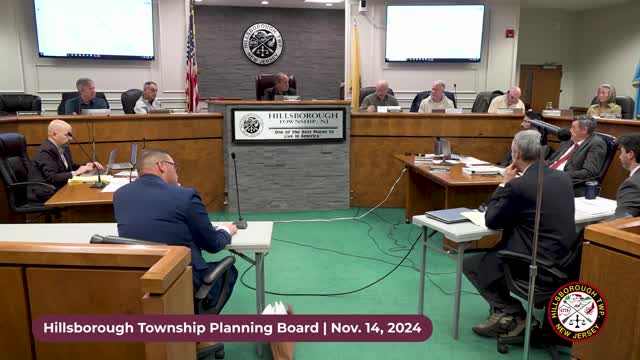Soil Classification Debate Sparks Controversy Over Water Management
November 14, 2024 | Hillsborough, Somerset County, New Jersey
This article was created by AI summarizing key points discussed. AI makes mistakes, so for full details and context, please refer to the video of the full meeting. Please report any errors so we can fix them. Report an error »

During a recent government meeting, discussions centered on the reclassification of soil types at a proposed development site, specifically the transition from a C classification to a D classification. Chief Financial Officer Emerson clarified that the site had previously been classified as C, which indicates a higher capacity for water absorption, while the applicant's engineer argues for a D classification, suggesting a higher potential for runoff.
The reclassification debate hinges on the interpretation of soil data from the Natural Resource Conservation Service (NRCS). Emerson explained that soil classification does not necessarily reflect physical changes over time but rather differing interpretations of the same soil series. The NRCS mapping indicates the soil as C, but the applicant's engineer contends that test results justify a D classification.
Public inquiry revealed that a D classification could benefit the applicant by simplifying compliance with groundwater recharge requirements, potentially allowing for less stringent design standards. Emerson noted that the proposed development would intentionally divert an additional four acres of drainage area, increasing the volume of runoff that the existing drainage system would need to manage. This diversion raises concerns about exacerbating existing flooding issues downstream, as the developer's responsibility is to ensure that their actions do not worsen current conditions.
The meeting underscored the complexities of soil classification and stormwater management, with implications for environmental impact and community planning. The discussions highlighted the need for careful consideration of engineering practices and regulatory compliance in the face of changing land use.
The reclassification debate hinges on the interpretation of soil data from the Natural Resource Conservation Service (NRCS). Emerson explained that soil classification does not necessarily reflect physical changes over time but rather differing interpretations of the same soil series. The NRCS mapping indicates the soil as C, but the applicant's engineer contends that test results justify a D classification.
Public inquiry revealed that a D classification could benefit the applicant by simplifying compliance with groundwater recharge requirements, potentially allowing for less stringent design standards. Emerson noted that the proposed development would intentionally divert an additional four acres of drainage area, increasing the volume of runoff that the existing drainage system would need to manage. This diversion raises concerns about exacerbating existing flooding issues downstream, as the developer's responsibility is to ensure that their actions do not worsen current conditions.
The meeting underscored the complexities of soil classification and stormwater management, with implications for environmental impact and community planning. The discussions highlighted the need for careful consideration of engineering practices and regulatory compliance in the face of changing land use.
View full meeting
This article is based on a recent meeting—watch the full video and explore the complete transcript for deeper insights into the discussion.
View full meeting
